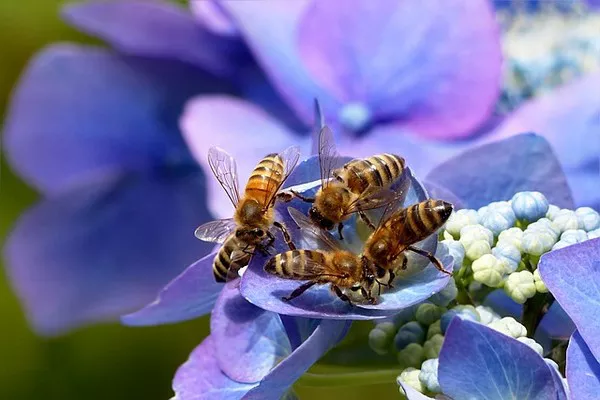Bumble bees play a vital role in pollination, contributing significantly to the health and diversity of ecosystems. As pollinators, they assist in the reproduction of flowering plants by transferring pollen from male to female flowers. Understanding the flowers that attract bumble bees is crucial for gardeners, conservationists, and anyone interested in fostering a bee-friendly environment. In this article, we will delve into the fascinating world of bumble bee preferences and explore the characteristics that make certain flowers irresistible to these essential pollinators.
The Relationship Between Bumble Bees and Flowers
Bumble bees, like many other pollinators, are attracted to flowers primarily for their nectar and pollen. Nectar serves as a valuable energy source, while pollen provides essential proteins and nutrients. The symbiotic relationship between bumble bees and flowers has evolved over millions of years, resulting in a fascinating interdependence that benefits both parties.
Characteristics of Flowers that Attract Bumble Bees
1. Color and Visibility
Bumble bees are known to be particularly responsive to color, with a strong preference for bright and vivid hues. Flowers that are yellow, blue, and purple are especially attractive to bumble bees, as these colors stand out prominently against the backdrop of green foliage. Furthermore, bumble bees have been found to have an innate ability to see ultraviolet light, allowing them to detect patterns on flowers that are invisible to the human eye. This capability aids in locating nectar and pollen-rich flowers efficiently.
2. Shape and Structure
The shape and structure of flowers also play a crucial role in attracting bumble bees. These insects have specialized mouthparts that allow them to access nectar from flowers with specific shapes. Flowers with tubular structures, such as foxgloves and penstemons, are well-suited to bumble bees, providing easy access to nectar. Additionally, flowers with landing platforms, like the coneflower (Echinacea), make it convenient for bumble bees to land and collect nectar.
3. Scent and Fragrance
While humans may appreciate the fragrance of flowers for aesthetic reasons, bumble bees rely on scent to locate potential food sources. Flowers that emit sweet and pleasant fragrances are more likely to attract bumble bees. Some examples include lavender, rosemary, and bee balm. Fragrance acts as a long-distance signal, guiding bumble bees toward flowers and enhancing their foraging efficiency.
4. Seasonal Availability
Bumble bees are active during the warmer months, and the availability of flowers throughout the seasons influences their foraging patterns. Planting a variety of flowers that bloom at different times ensures a continuous supply of food for bumble bees. Early spring-flowering plants like crocuses and heathers provide sustenance when bumble bees emerge from hibernation, while late-season bloomers such as asters and sedums offer nourishment as the temperatures cool.
5. Nectar Accessibility
The ease with which bumble bees can access nectar within a flower is a critical factor. Flowers with shallow or open structures make it simpler for bumble bees to reach the nectar. In contrast, some complex flowers with deep corollas may not be as attractive to bumble bees due to the difficulty in accessing the nectar. Plants like geraniums and dahlias are popular choices for their accessible nectar.
See Also: What Flowers Attract Monarch Butterflies
Recommended Flowers for Bumble Bees
1. Lavender (Lavandula)
Lavender, with its fragrant blooms and purple color, is a favorite among bumble bees. The abundant nectar production and open structure of lavender flowers make them easily accessible to these pollinators.
2. Bee Balm (Monarda)
True to its name, bee balm is highly attractive to bees, including bumble bees. The tubular shape of the flower and its vibrant colors, such as red and purple, make it a beacon for these pollinators.
3. Echinacea (Coneflower)
Coneflowers are not only visually appealing but also a magnet for bumble bees. The central cone structure provides a landing platform, and the open petals allow for easy access to nectar.
4. Foxglove (Digitalis)
Foxgloves, with their tall spikes of tubular flowers, are well-suited for bumble bees. The downward-facing blooms make it convenient for these insects to access nectar while providing a stunning vertical display in gardens.
5. Salvia
Salvia, with its long spikes of tubular flowers, is a favorite of bumble bees. The wide range of salvia varieties offers different colors, ensuring a diverse and bee-friendly garden.
Conclusion
Creating a bee-friendly garden not only adds beauty to your surroundings but also contributes to the well-being of bumble bees and other pollinators. By understanding the characteristics that attract bumble bees to flowers, you can make informed choices when selecting plants for your garden. Remember to provide a variety of flowers that bloom throughout the seasons, ensuring a continuous food supply for these essential pollinators. With a little effort and consideration, you can play a part in supporting the health of bumble bee populations and the broader ecosystem.


